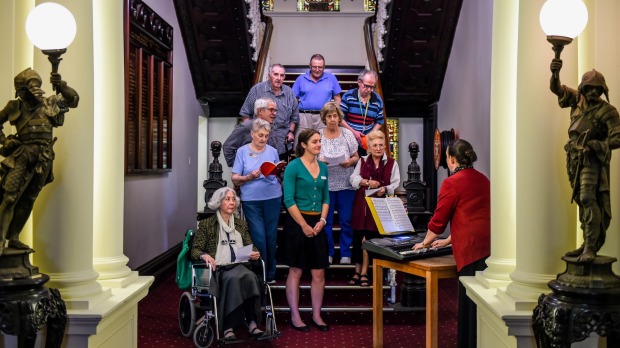
The woman had been virtually been mute since her stroke 18 months earlier.
She could speak her name and say “hello”; anything more complex than that slipped out of grasp somewhere between mind and lip.
But when a speech pathologist asked her to sing “doh re mi”, a look of amazement crossed her face. She was in song.

Next thing she was in a choir for people with neurological disorders, and life was on the up.
The NSW government has set up a taskforce to explore how the arts can be used to improve health outcomes.
The arts are widely used in hospitals and community treatment programs in Britain and the US, but not to the same extent in Australia.
The Taskforce on Health and the Arts, which met for the first time last week, will set out a strategic framework and a recommended budget, which will initially be funded by the health portfolio.
Former federal Liberal senator Chris Puplick, who will chair the taskforce, said this may include a mandated proportion of the budget on any new facility to be devoted to its aesthetics.
“[Health Minister] Jillian Skinner has made it absolutely clear that this development will have new money devoted to it,” Mr Puplick said. “We’re not going to be asking people to divert resources.
“It starts at the micro level of saying, when you design a new health facility, how do you integrate the visual arts, ceramic arts, music in the actual design of the building?”
The neurological choir, which is organised by speech pathologists at the War Memorial Hospital in Waverley, not only improves the patients’ impairment but gives them a social life and reduces the psychological distress associated with their condition.
Speech pathologist Alexis McMahon said it was often a revelation for people who could not talk to discover they could sing.
“They just get this look on their face where they’re like, ‘Wow’. They just glow.”
The choir puts on a concert at the end of the program and the feedback from last year’s participants and their carers was unanimously positive.
Mrs Skinner said hospitals already incorporated paintings and installations into their design, but she wanted an expanded role for the arts.
“This taskforce will explore broader ways in which art can inspire positive health outcomes in the community, from people living with dementia in nursing homes to jail inmates seeking rehabilitation or paediatric patients being inspired to explore creativity and imagination,” Mrs Skinner said.
The Cancer Institute NSW ran community art workshops in partnership with Chinese and Arabic organisations that educated women about the importance of mammograms, when it was shown that women from those backgrounds were less likely to have been screened.
